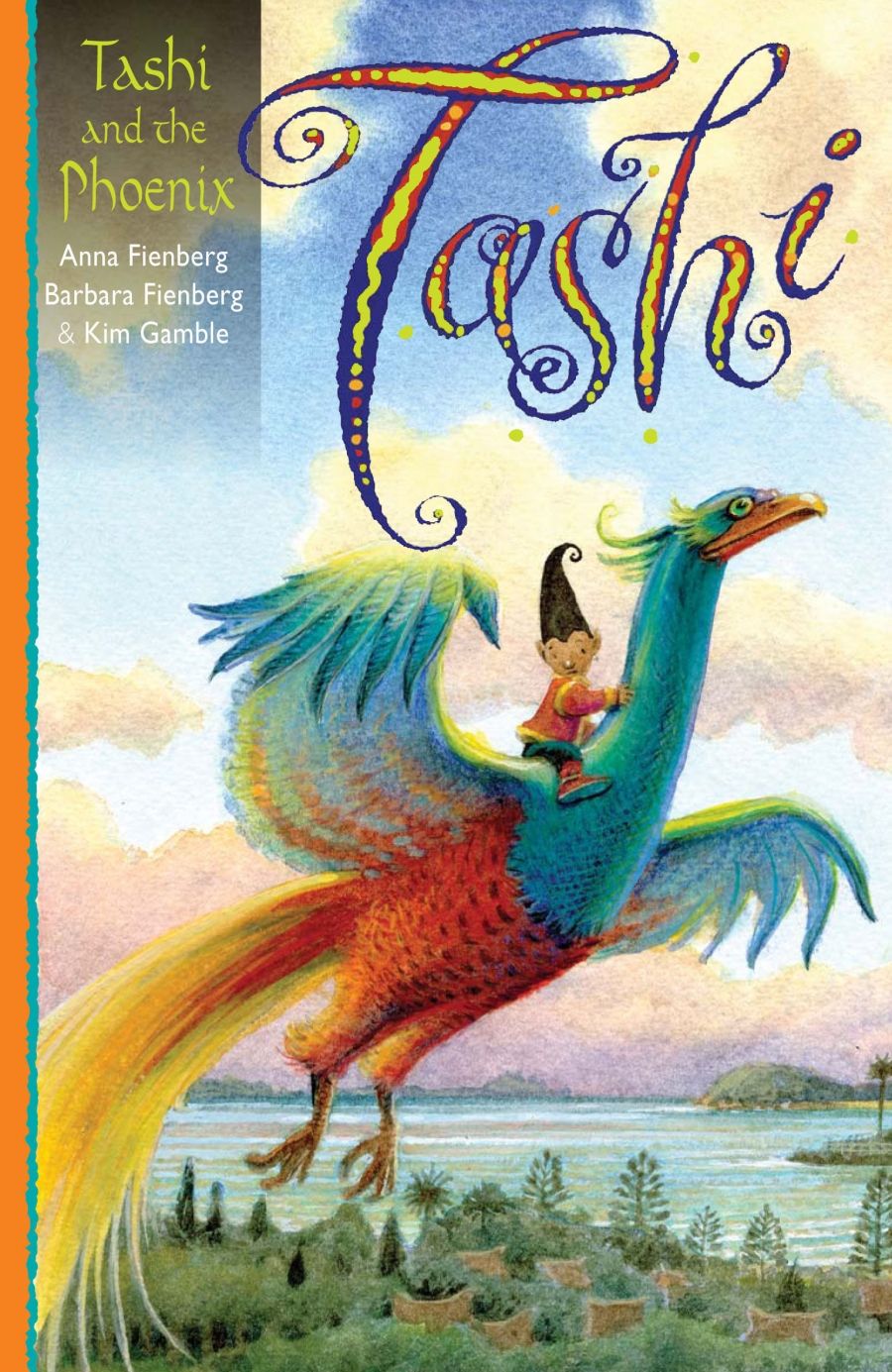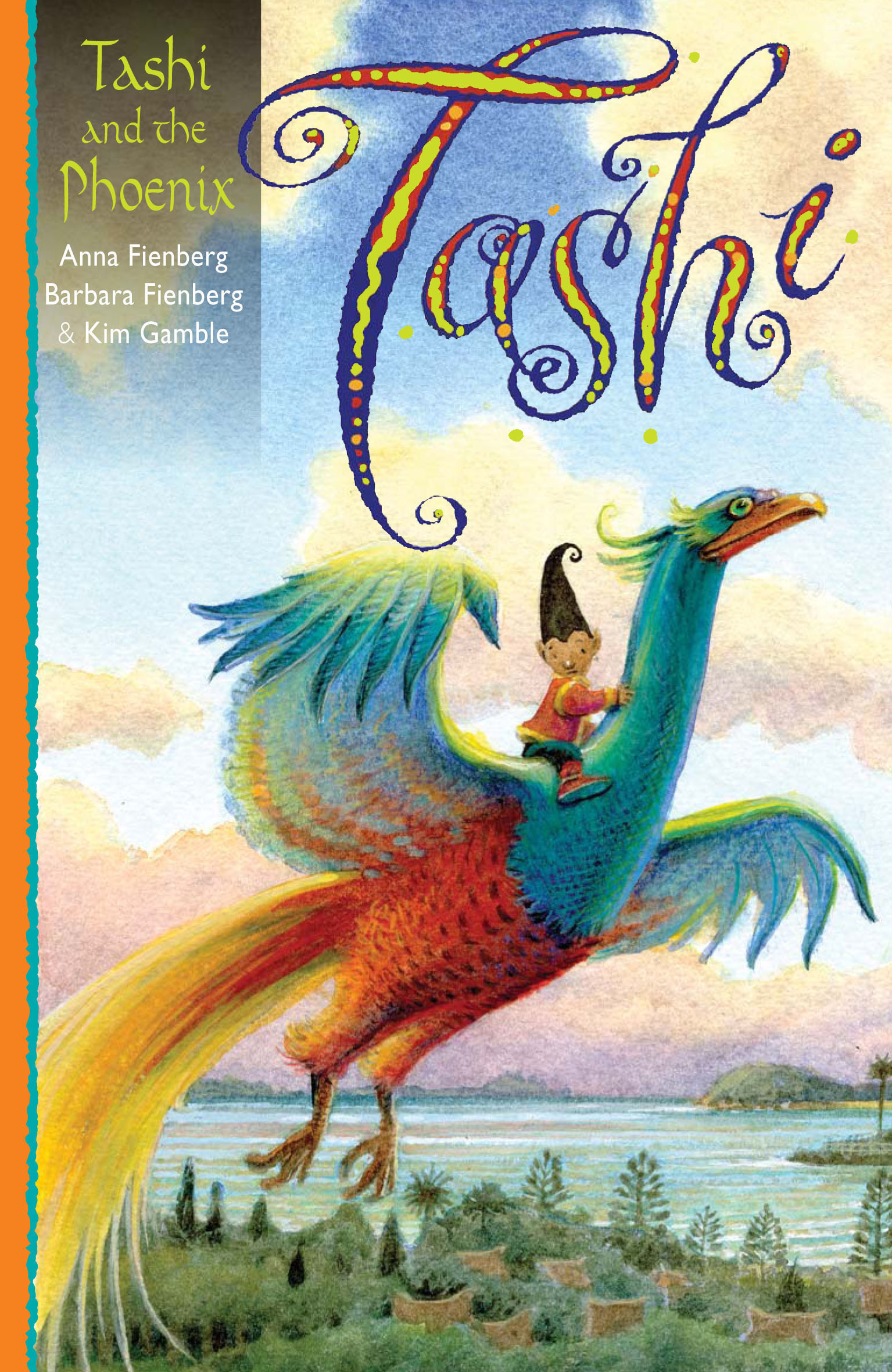
- Free Article: No
- Contents Category: Children's Fiction
- Review Article: Yes
- Article Title: Full of knowing
- Online Only: No
- Custom Highlight Text:
Young children often use the word ‘sad’ to describe negative or confusing emotions. ‘What you did made me sad,’ they will say. But children, as they get older, learn to offer richer explanations of interior states: grief, exasperation, shock, bewilderment, hurt, ecstasy and joy. It is language that gives us this flexibility of response. The best books offer us language that matches and sometimes even exceeds the richness of our experiences.
- Book 1 Title: Tashi and the Phoenix
- Book 1 Biblio: Allen & Unwin, $11.95 pb, 64 pp
- Book 1 Cover Small (400 x 600):

- Book 1 Cover (800 x 1200):

Tashi and the Phoenix (Allen & Unwin, $11.95 pb, 64 pp), by Anna and Barbara Fienberg, is the fifteenth book in the Tashi series. The longevity of the character Tashi is due in no small part to Kim Gamble’s balanced and beautiful illustrations. Such partnerships are rare in this business. Some people think that book series go in one eye and out the other, but series support transitional readers by sharing characters, style and story progression across different settings. In this ‘early chapter book’, there is a clarity to the scenarios and characters that reminds me, in a pleasant way, of Enid Blyton. In Tashi and the Phoenix, Tashi engages the help of a Phoenix to get his uncle out of trouble, and also persuades the emperor to let a princess’s sister marry her true love. The framing device for the adventure – as in all the Tashi books – is a conversation between Tashi, Jack and members of the latter’s family. I wonder whether this approach reduces the stakes of the stories themselves, and limits the corresponding rewards. How would a Tashi adventure unfold in real time?
Toad Surprise (Puffin, $16.95 pb, 162 pp) is another series novel – the fourth in Morris Gleitzman’s growing collection of Toad books. Early on, we get this wonderful summary line: ‘Be honest with us. Are you about to go on another dangerous quest to try and bring safety and happiness to cane toads for countless generations to come?’ In Toad Surprise, Limpy and Goliath plan to become Santa’s little helpers. The ongoing joke of the novel is the role reversal: the compassionate cane toad versus an indifferent humanity. We also get the toads’ anthropological view of Christmas ritual, in which Limpy’s earnest determination to imitate human convention works as gentle satire. The reader recognises that aspects of Christmas are cheesy and debased, but then the story sucks us back in and we get seduced all over again.
The opening of Curly and the Fent (Random House, $12.95 pb, 109 pp) is a good example of why reading children’s fiction can be such fun. Here is a creature you have never heard of: a bottersnike and a kangaroo hybrid called a Fent. Boom! As with the Tashi books, the authorship is a family affair: Sally Morgan and her grown-up children, Ambelin, Blaze and Ezekiel Kwaymullina. In terms of the book’s target audience, the focus of the Fent’s attention feels just right: it’s on cars, tricks, silly jokes, authority. It’s a boy thing. The Fent – all impulse and no consequence – skitters all over the place. The neat reversal at the heart of the book is to hand responsibility for such a creature to a ten-year-old Aboriginal boy, Curly, who has to deal with this being for whom the rules of society have little purchase. There are metaphors here, but they are never heavy-handed; more something you wryly notice while you’re enjoying the read. In the Australian context, indigenous authors staking group ownership of a creative story series feels political as well as personal. It is interesting stuff, and there are more books to come. How will Curly grow up?
One Beastly Beast (Allen & Unwin, $14.95 pb, 228 pp) is Garth Nix at his loosest, both generically and stylistically. In Coleridgean terms, he is working at the level of Fancy rather than Imagination, but the pay-off for losing story, in the rich, novelistic sense of the word, is that you get an author at the peak of his game having some fun. I laughed out loud when the rat in the bandana announced he was a DVD pirate, and I thought the ending of ‘Serena and the Sea Serpent’ was a gem. My Grade One class gasped when Princess Chlorinda swore – ‘the bloody beast on the battlements’ – and giggled when they understood the joke. Although they stand alone, the four stories in this book will mean more for readers who have read widely and can appreciate the manner in which Nix is playing with reader expectations concerning genre and character.
Books are descriptions of experiences and the act of reading is an experience also. In this they are doubly experiential, and they affect the reader in the interstices between the two states. The last two books under review have encounters of substance at their core. They deserve special mention.
Perry Angel’s Suitcase (ABC Books, $14.95 pb, 113 pp), by Glenda Millard, is a spider’s web of a tale, both fragile and strong. The eponymous Perry Angel arrives at the Silk household with a welfare worker and a small suitcase. The event takes on different dimensions for the children in the house, notably Griffin Silk and his friend Layla. Whenever you are with a character, the third-person narration takes his or her point of view which is cumulatively disorienting and powerful. At times my interest waned in the wholesome Silks: such limpid prose deserved a stronger, and perhaps more concentrated, narrative arc. But Millard creates real substance by naming the things around her characters with definiteness and conjuring up the relationships between people and place. Stephen Michael King’s illustrations are superb: his lines swirl and ripple on the page. He draws small things that produce expansive ground in readers’ minds. Magical.
Finally to Lighthouse Girl (Fremantle Press, $24.95 hb, 120 pp), written by Diane Wolfer and illustrated by Brian Simmonds. This aesthetically and conceptually ambitious book has beautiful production values, interspersing the realia of daily life in 1914 – newspaper clippings, photographs and postcards – against multiple narrative texts and full-page charcoal drawings. The story concerns Fay Howe, a young girl living on Breaksea Island with two lighthouse keepers, her father and his co-worker. War is declared, and the combined Australian New Zealand Imperial Forces – 30,000 men – gather in Albany. Fay sends a series of messages to the soldiers on the boats and relays messages from them back to their loved ones. Fay’s situation is serious – a girl coming of age, living in an isolated place in a changing social climate – but the narrative stakes never appear as high as the situation warrants. I can’t help feeling the anchor to history has shortchanged both forms. There is a literality to the narrative. The space left for the reader’s imagination to play is minimal and often is filled in by the pictures and collage. The charcoals are well executed, but in context they do not take us to the places where the words cannot go. My criticism concerns expectations. Lighthouse Girl sets itself up as a growth novel, but there is actually little growth in it. There is a wealth of detail, a wealth of descriptive states and a wealth of illustration but not much character, and consequently nothing to change over time. The most immediate and obvious source of character – Fay’s relationship with her father – remains unexplored.


Comments powered by CComment